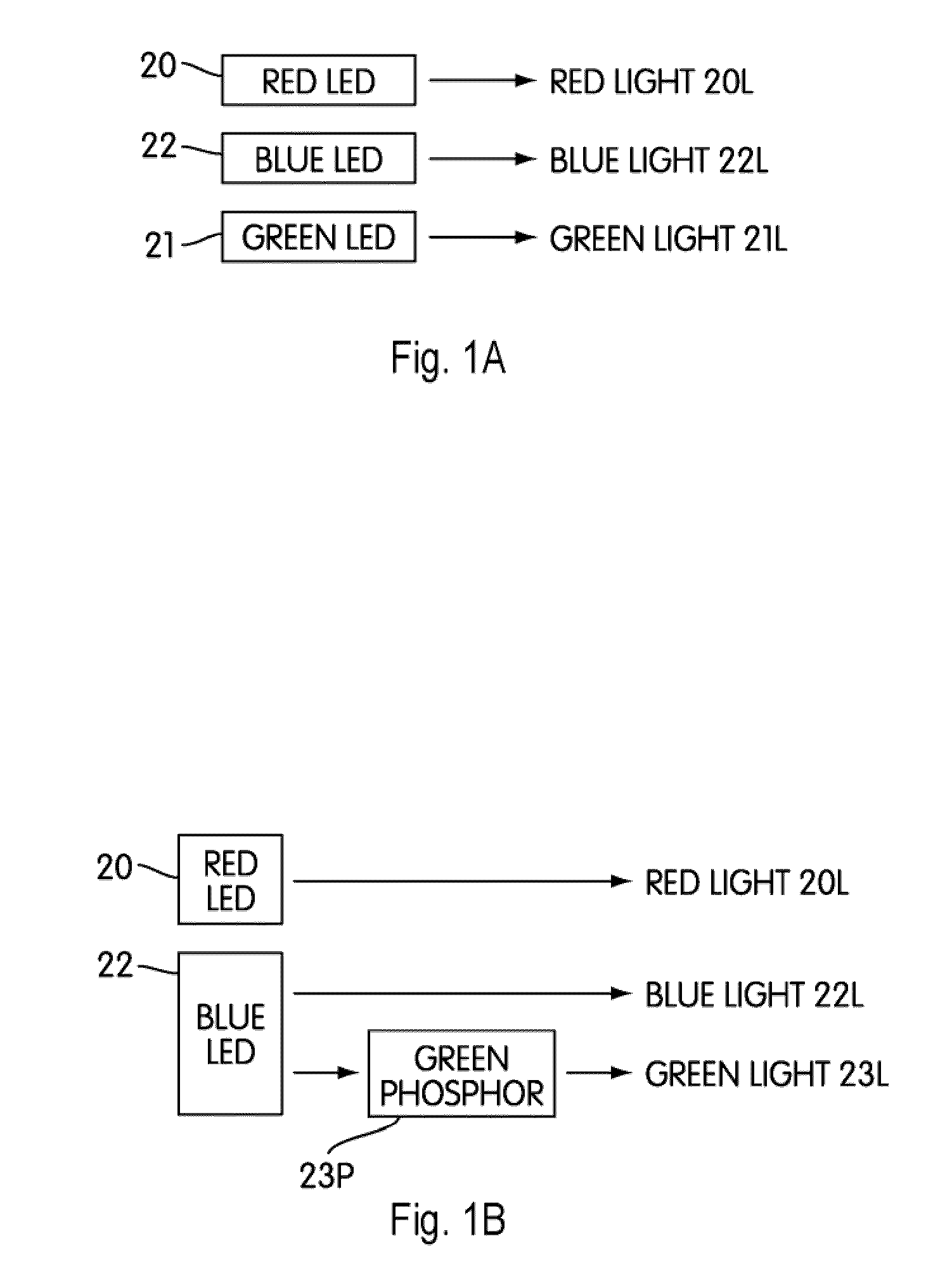Nitride-based, red-emitting phosphors
a technology of nitride and phosphor, which is applied in the direction of discharge tube/lamp details, climate sustainability, light sources, etc., can solve the problems of difficult to obtain nitrides, difficult to produce nitridosilicate-based phosphors industrially, and difficult to absorb phosphor emissions, etc., to achieve low levels
- Summary
- Abstract
- Description
- Claims
- Application Information
AI Technical Summary
Benefits of technology
Problems solved by technology
Method used
Image
Examples
Embodiment Construction
[0036]An introduction to the field of nitride-based, red emitting phosphors has been provided by K. Uheda et al. in “Luminescence properties of a red phosphor, CaAlSiN3:Eu2+, for white light-emitting diodes,” published in Electrochemical and Solid-State Letters, 9 (4) H22-H25 (2006). This reference explains how white light-emitting diodes (LEDs) are attracting increasing attention due to their high efficiencies and long lifetimes. The earliest “white light LEDs,” consisting of a blue LED as an excitation source and provider of blue light, and a yellow-emitting YAG:Ce3+ phosphor, suffered from low color rendering because of the lack of a red component. An earlier attempt at providing the desired red component was made with an Eu2+ activated alkaline earth sulfide, which had the advantage of being excitable by blue light, but which also suffered from the potential to be degraded by atmospheric moisture due to its hygroscopic nature. The next generation of red phosphors exhibited an im...
PUM
| Property | Measurement | Unit |
|---|---|---|
| correlated temperatures | aaaaa | aaaaa |
| temperature | aaaaa | aaaaa |
| temperature | aaaaa | aaaaa |
Abstract
Description
Claims
Application Information
 Login to View More
Login to View More - R&D
- Intellectual Property
- Life Sciences
- Materials
- Tech Scout
- Unparalleled Data Quality
- Higher Quality Content
- 60% Fewer Hallucinations
Browse by: Latest US Patents, China's latest patents, Technical Efficacy Thesaurus, Application Domain, Technology Topic, Popular Technical Reports.
© 2025 PatSnap. All rights reserved.Legal|Privacy policy|Modern Slavery Act Transparency Statement|Sitemap|About US| Contact US: help@patsnap.com



